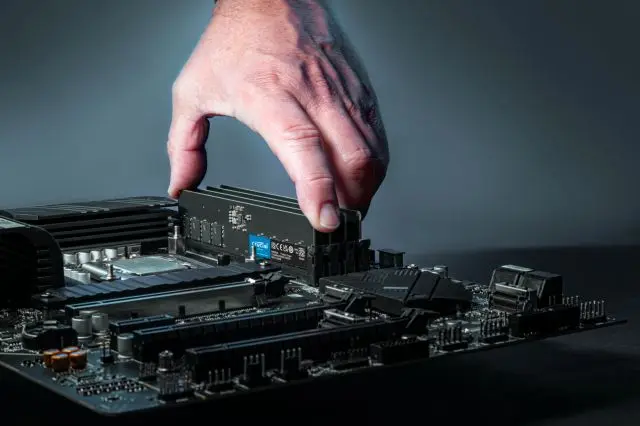To ensure profitability in the used computer parts market, strategic pricing is essential. Analyze market trends, component conditions, and competitors’ pricing models. Set prices based on market value, brand reputation, and demand. Boost profit margins by leveraging bulk purchases and dynamic pricing tactics. Stay competitive by adjusting prices according to demand and competition levels. Continuously monitor market trends and customer feedback to make pricing tweaks. With a keen understanding of market dynamics and competitive pricing strategies, businesses can thrive in the tech industry. Determining reasonable pricing for used PC parts requires careful consideration of factors like market demand, condition, and the specifications of the components.
Key Takeaways
- Analyze market trends to set competitive prices.
- Utilize data-driven insights for dynamic pricing adjustments.
- Consider customer value perceptions for pricing strategies.
- Optimize profit margins through bulk purchasing and cost reduction.
- Regularly adjust prices based on market demand and competition.
Challenges of Pricing Used PC Parts
Handling the intricacies surrounding the pricing of pre-owned PC components poses a significant challenge for businesses seeking to maximize profitability in the competitive tech market. Factors such as fluctuating demand, evolving technology, and market saturation impact pricing strategies. To navigate these challenges successfully, businesses must analyze market trends, assess component conditions accurately, and develop dynamic pricing models to stay competitive and improve profitability.
Understanding Market Value for PC Parts
Understanding the detailed scenery of the tech market requires a thorough grasp of the dynamic factors that determine the market value of PC parts. Market value is influenced by factors such as brand reputation, performance capabilities, demand trends, and scarcity. Analyzing these elements helps businesses align their pricing strategies with current market conditions, ensuring competitive pricing and maximizing profitability within the PC parts industry.
Factors Influencing Pricing Decisions
Analyzing the expenses associated with setting prices for pre-owned PC components, understanding market demand trends, and implementing competitive pricing strategies are essential factors that influence pricing decisions in the PC parts industry. Expense analysis provides insights into setting prices that cover costs while remaining appealing to customers. Market demand insights help in aligning pricing with customer preferences, while competitive pricing strategies aim to position products effectively against industry rivals.

Cost Analysis for Pricing
When determining the pricing for used computer parts, a thorough cost analysis is paramount to consider the various factors that influence pricing decisions. Factors such as acquisition costs, refurbishment expenses, market trends, and competitive pricing all play a significant role in setting the right price point. By meticulously analyzing these costs, businesses can make informed pricing decisions that align with market demands and maximize profitability.
Market Demand Insights
After conducting a thorough cost analysis for pricing pre-owned computer parts, gaining insights into market demand becomes important for making informed pricing decisions that align with profitability goals and market dynamics. Understanding factors such as consumer preferences, trends, and competition helps in setting competitive prices that attract buyers while maximizing revenue. Market demand insights play a significant role in shaping pricing strategies to meet the needs of the target audience effectively.
Competitive Pricing Strategies
In formulating competitive pricing strategies for secondhand computer components, a thorough analysis of the factors influencing pricing decisions is important to profitability and market relevance. Factors such as market demand, competitor pricing, component condition, and brand reputation play significant roles in determining the best pricing strategy. By understanding these influences, businesses can strategically price their used PC parts to attract customers and maximize revenue.
Setting Competitive Prices for PC Parts
Strategically setting competitive prices for PC parts is vital for maximizing profitability and gaining a competitive edge in the market. Analyzing market trends, competitor pricing strategies, and cost structures is necessary. By understanding customer value perceptions and aligning prices accordingly, businesses can attract a broader customer base. Utilizing data-driven insights to adjust prices dynamically can also assist in responding effectively to market fluctuations and staying ahead of the competition.
Strategies to Optimize Profit Margins
To further boost profitability in the PC parts market, it is important to implement strategic approaches aimed at optimizing profit margins effectively.
- Leverage Bulk Purchasing: Negotiate better prices from suppliers by buying in larger quantities.
- Streamline Operations: Improve efficiency to reduce overhead costs and increase overall margins.
- Implement Dynamic Pricing: Utilize data analytics to adjust prices based on market demand and competition.
Importance of Pricing Consistency
Maintaining pricing consistency is vital for businesses as it directly impacts their overall pricing strategy. Consistent pricing builds trust and reliability with customers, influencing their perception of the brand. By ensuring pricing remains steady and aligned with market standards, businesses can improve profitability through strategic pricing practices.
Pricing Strategy Impact
Ensuring uniformity in pricing is a fundamental aspect of a successful business model, directly impacting profitability and customer trust.
- Consistency Builds Credibility: It establishes transparency and reliability.
- Simplifies Decision-Making: Customers appreciate predictability in pricing.
- Enhances Brand Image: A consistent pricing strategy reinforces the brand’s value proposition.
Customer Perception Influence
Building on the foundation of a steadfast pricing strategy, the impact of customer perception on pricing becomes a vital factor in shaping the overall success and sustainability of a business. Consistent pricing builds trust and loyalty with customers, enhancing brand reputation. Inconsistencies may lead to confusion and distrust, impacting long-term relationships. Understanding and aligning pricing with customer expectations are indispensable for nurturing a positive perception and driving business growth.
Profitability Through Pricing
Maximizing profitability in business operations hinges significantly on the consistent alignment of pricing strategies with market demands and customer expectations.
- Understanding Market Trends: Regularly analyze market data to adjust prices accordingly.
- Customer Feedback Integration: Incorporate customer feedback to fine-tune pricing strategies.
- Competitor Pricing Analysis: Keep a close eye on competitors’ pricing to e competitiveness and value proposition.
Implementing Dynamic Pricing Tactics
Incorporating dynamic pricing tactics into your business strategy can significantly boost revenue streams and adapt to market fluctuations effectively. By utilizing data-driven insights and strategic pricing adjustments, businesses can respond to changing demand and competition swiftly. Implementing dynamic pricing models allows for maximizing profits while staying competitive, offering customers a sense of value and belonging in a dynamic marketplace.
Leveraging Discounts and Bundles
Utilizing strategic reduction and grouping strategies can enhance the overall value proposition of your second-hand computer parts inventory, attracting budget-conscious customers and nurturing loyalty in a competitive market terrain.
- Discount Tiers: Offer reductions based on the quantity purchased, incentivizing bulk buys.
- Bundle Deals: Combine related parts for a reduced price, encouraging multiple purchases.
- Seasonal Promotions: Introduce limited-time offers to create urgency and drive sales.
Pricing for Customer Retention
Implementing effective pricing strategies is important for nurturing long-term customer loyalty and retention in the competitive market of pre-owned computer components. By offering loyalty discounts, personalized pricing plans, and exclusive promotions to returning customers, businesses can improve customer satisfaction and encourage repeat purchases. Analyzing customer data to tailor pricing strategies can create a sense of belonging and value, ultimately nurturing strong customer relationships and increasing retention rates.
Monitoring and Adjusting Pricing Strategies
To optimize profitability, businesses must continuously assess their pricing strategies. Pricing Strategy Evaluation involves analyzing the effectiveness of current pricing models. Dynamic Pricing Analysis allows for real-time adjustments based on market conditions, ensuring competitiveness and maximizing revenue potential. Adjusting Price Points based on data-driven insights is essential for sustaining profitability in the constantly changing used PC parts market.
Pricing Strategy Evaluation
In the dynamic scenario of commerce, the evaluation of pricing tactics stands as a vital cornerstone for sustainable profitability and growth.
- Regular Review: Consistently analyze pricing strategies to guarantee alignment with market dynamics.
- Competitor Benchmarking: Compare pricing structures with competitors to uphold competitiveness.
- Customer Feedback Integration: Integrate customer feedback into pricing adjustments for improved value perception.
Dynamic Pricing Analysis
Within the domain of pricing strategy evaluation, a fundamental aspect that demands attention is the continuous analysis and adjustment of pricing strategies to adapt to the dynamic market environment – this is where Dynamic Pricing Analysis plays a pivotal role. By utilizing data-driven insights, businesses can make real-time adjustments to pricing strategies, ensuring competitiveness and profitability in the constantly changing market scenario. This strategic approach nurtures a sense of belonging and relevance in the industry.
Adjusting Price Points
Utilizing accurate data analysis and strategic insights, the modification of price points forms an essential component of monitoring and enhancing pricing strategies for optimal business profitability.
- Conduct regular market research to stay informed on price trends.
- Analyze customer feedback and adjust prices accordingly.
- Monitor competitors’ pricing strategies to stay competitive in the market.
Frequently Asked Questions
How Can Businesses Overcome the Challenges of Pricing Used PC Parts Effectively?
To overcome challenges in pricing used personal computer parts effectively, businesses should conduct market research, analyze competitors’ pricing strategies, consider product condition and demand, implement dynamic pricing models, and offer value-added services to differentiate themselves and attract customers.
What Factors Should Be Considered When Determining the Market Value for PC Parts?
When determining the market value for PC parts, factors such as demand, condition, brand reputation, age, and compatibility need consideration. Conducting market research, tracking trends, and understanding customer preferences play pivotal roles in setting competitive prices.
How Do Various Factors Influence the Pricing Decisions for Used PC Parts?
Various factors influencing pricing decisions for used PC parts include market demand, situation, brand reputation, age, and scarcity. By analyzing these elements, businesses can strategically set competitive prices to maximize profitability and cater to customer needs effectively.
What Strategies Can Businesses Use to Set Competitive Prices for PC Parts in the Market?
Businesses can employ strategies like competitive examination, value-based pricing, and dynamic pricing to set compelling prices for PC parts. By understanding market trends, customer preferences, and cost structures, companies can guarantee profitability and competitiveness.
How Important Is Pricing Consistency in Maintaining Profitability When Selling Used PC Parts?
Maintaining pricing consistency is vital for profitability in the used PC parts market. By establishing a dependable pricing structure, businesses can build customer trust, streamline operations, and improve their reputation, ultimately driving sustainable growth and maximizing profitability.
Conclusion
In summary, the strategic pricing of used PC parts is vital for enhancing business models and improving profitability in the technology sector. By understanding market value, considering influencing factors, and implementing dynamic pricing tactics, companies can optimize profit margins and attract more customers. Utilizing discounts, bundles, and customer retention strategies further contribute to a successful pricing strategy. Continuous monitoring and adjustment of pricing strategies are necessary for sustained success in the competitive environment of the technology industry.
You may also like to read:
How Do Business Strategies Enhance Residential Addiction Recovery Retreats?





